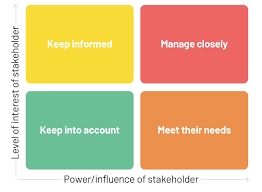Admit it.
2020 was a train wreck you didn’t see coming.
The pandemic accelerated the adoption of digital commerce in 3 months. Meanwhile, there was a revolution in customer attitudes and behaviors.
The result?
Most businesses reacted to the changing business environment—without considering their customer experience strategy.
This fragmented approach left many businesses weary despite their best efforts.
The reality is that businesses need to adapt to evolving customer expectations. If they don’t, they stand to lose a considerable chunk of revenue to their competitors—or worse off, die.
So, can your business take the lessons from 2020 into 2021?
Absolutely!
You’re probably wondering how you can deliver an exceptional and empathetic customer experience.
Here are some ideas:
#1: Lead With Empathy
Here’s an open secret.
Customers care more about brands that care about them. Empathy isn’t a “waste of time,” but rather a critical element of trust. You’re likely to have a compelling customer experience strategy if you lead with empathy.
Consider the ‘Golden Rule’ and apply it across all your customers. See the world from their perspective. What are they dealing with? What are some of the challenges they experience on a day-to-day basis? Can you tap into what they are feeling?
A recent study shows that 59% of customers think that companies have lost their human touch.
Why?
Too much technology.
Surprising, isn’t it?
Prioritizing empathy can infuse the human element in your company’s technology strategy. This option enhances your customer experience strategy.
#2: Consider Stakeholder Mapping
Stakeholder mapping helps you decide the critical groups to your customer experience strategy. The entire company influences your brand’s customer experience.

Consider the departments that interact with the customer. For example, marketing, sales support, product management, and billing are critical to your customer experience strategy.
Moreover, focus on stakeholder capitalism. Consider the interests of all your stakeholders (employees, customers, suppliers, shareholders, and local communities)
For example, your employees determine the customer service your customers receive.
Better customer service=Increased Revenue=happy Shareholders.
The math adds up, doesn’t it?
#3: Reach Your Target Audience
Knowing who is your target audience is a critical first step.
Unfortunately, information on target customers is sometimes too generalized and based on assumptions. It’s time to stop making educated assumptions about your customer’s needs.
How you communicate is a big part of your customer experience strategy. Empathy encourages engagement. Your target audience is likely to be genuine in their feedback.
To determine customer needs, you must first choose the channels they’re most active on. With this knowledge, you can adapt your approach to suit them.
Understanding these channels can also help you determine why they buy your products. This information offers a competitive advantage.
Having accurate customer information can help your outreach and influence other functional areas. Customer experience should be the basis of decision making in all functional areas.
#4: Convenient Customer Service and Purchasing Channels
In the context of stressful global events and general overwhelm—make it easy for your customers to deal with you. Customer service optimization is an essential part of your customer experience strategy.
Stay ahead of your competitors by providing end-end customer service support. Focus on online support and show your customers you care about their customer experience.
Do you have a chatbot strategy in play? Consider a conversational AI-based chatbot.
Also, consider convenient purchasing channels for your customers. Don’t make it difficult for people to give you their money.
Your target customers have so much competing for their attention. Ensure your pricing information is up-to-date, and your website has accurate packaging information.
Convenience goes a long way in enhancing their customer experience.
#5: Create Digital Personalization
Collect information throughout the customer relationship. This information is useful for more informed support in the future. This information can provide helpful and relevant suggestions to the customer.
Personalization is positive for your business. It shows your commitment to providing better service and support to your customers.

Use all your avenues for collecting customer data. Consider a shared inbox for your customer support department. This inbox is useful in finding previous requests or conversations from a particular user. This data creates an opportunity for contextual communication and outreach.
#6: Focus on Simplicity & Ease of Use.
You’ve probably experienced a website that was a disaster to navigate on mobile. Most likely, you wanted to hit the back button quickly.
Your customers feel the same way.
Since mobile usage continues to grow, mobile optimization should be a high priority for your business.
Provide a seamless and straightforward experience for your target audience. Focus on simplifying website navigation for all types of browsing.
Keep your website convenient. Potential customers shouldn’t have to switch to desktop due to poor loading speeds and website design. Offer an easy way to answer common purchasing questions and uncover product or service information quickly.
#7: Make Use of Automation and AI.
Recent global events have changed how the world does business. The result is an increased demand for a digital presence and customer service delivery.
No business wants to lose the “personal touch’ that it gives to customers. However, the increased demand for digitized customer service requires investment in automation. Automation can help keep your customer service standards high.
If used correctly, AI and automation tools enhance the customer experience and are convenient for your customer support team.
Consider digital assistants powered by AI that automate experiences while optimizing the path to buying in real-time.
Also, leverage automation and AI to have flexible communication channels. An omnichannel approach provides customers with an integrated and seamless experience—even when using different platforms such as desktop to mobile or social media to live support.
The customer experience should be seamless across all channels and platforms. Automation and AI is a big part of making this possible.
Empathy—Your Secret Weapon
No doubt.
The latest accelerated digital commerce adoption trends can be confusing to businesses.
However, leading with empathy will enhance your customer experience strategy in 2021. Empathy is the secret sauce to a successful customer experience strategy with a human touch.
Consider investing in technology that gives your business a human feel.
It’s time to wield your secret weapon. You won’t regret it.

